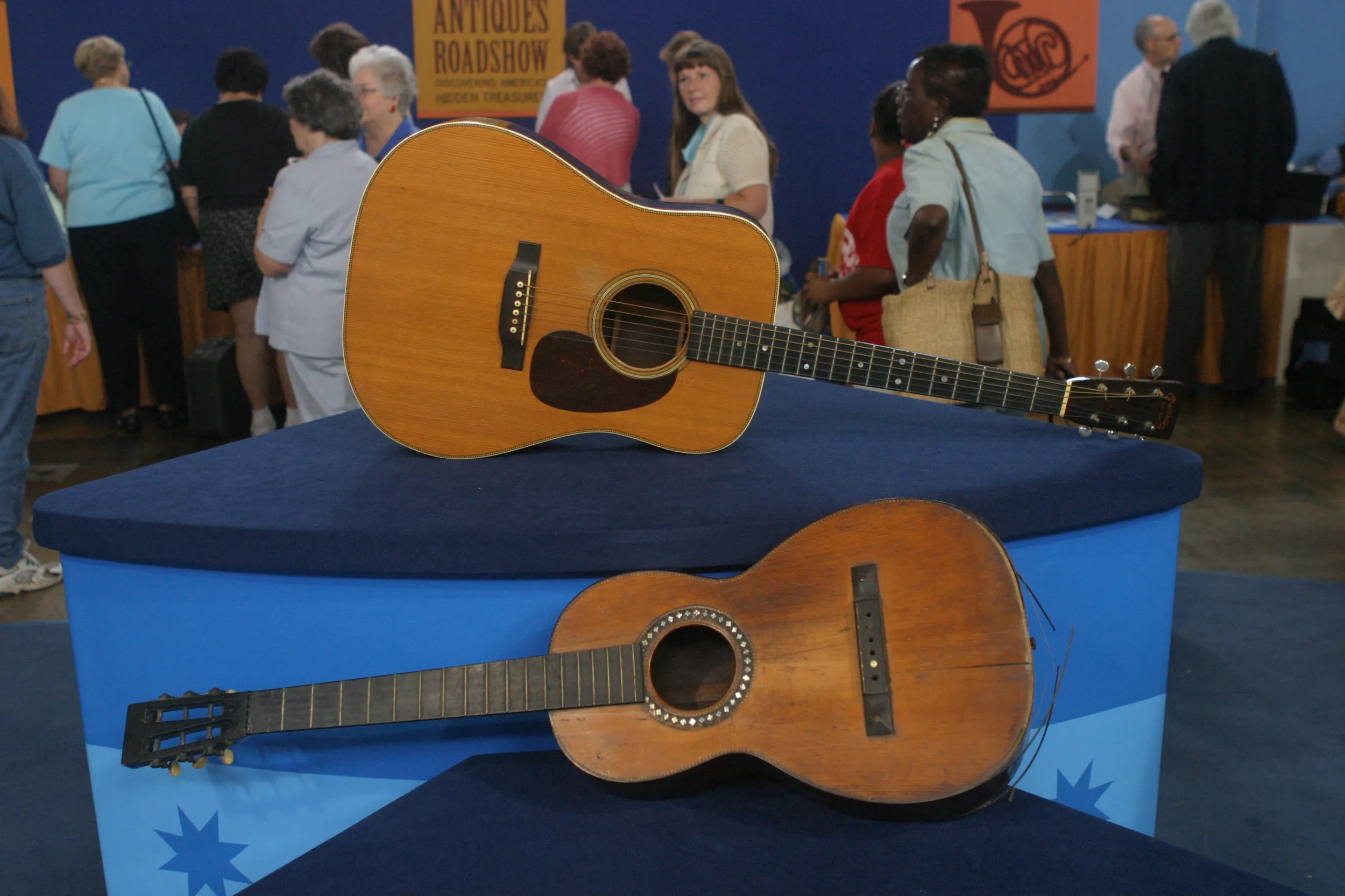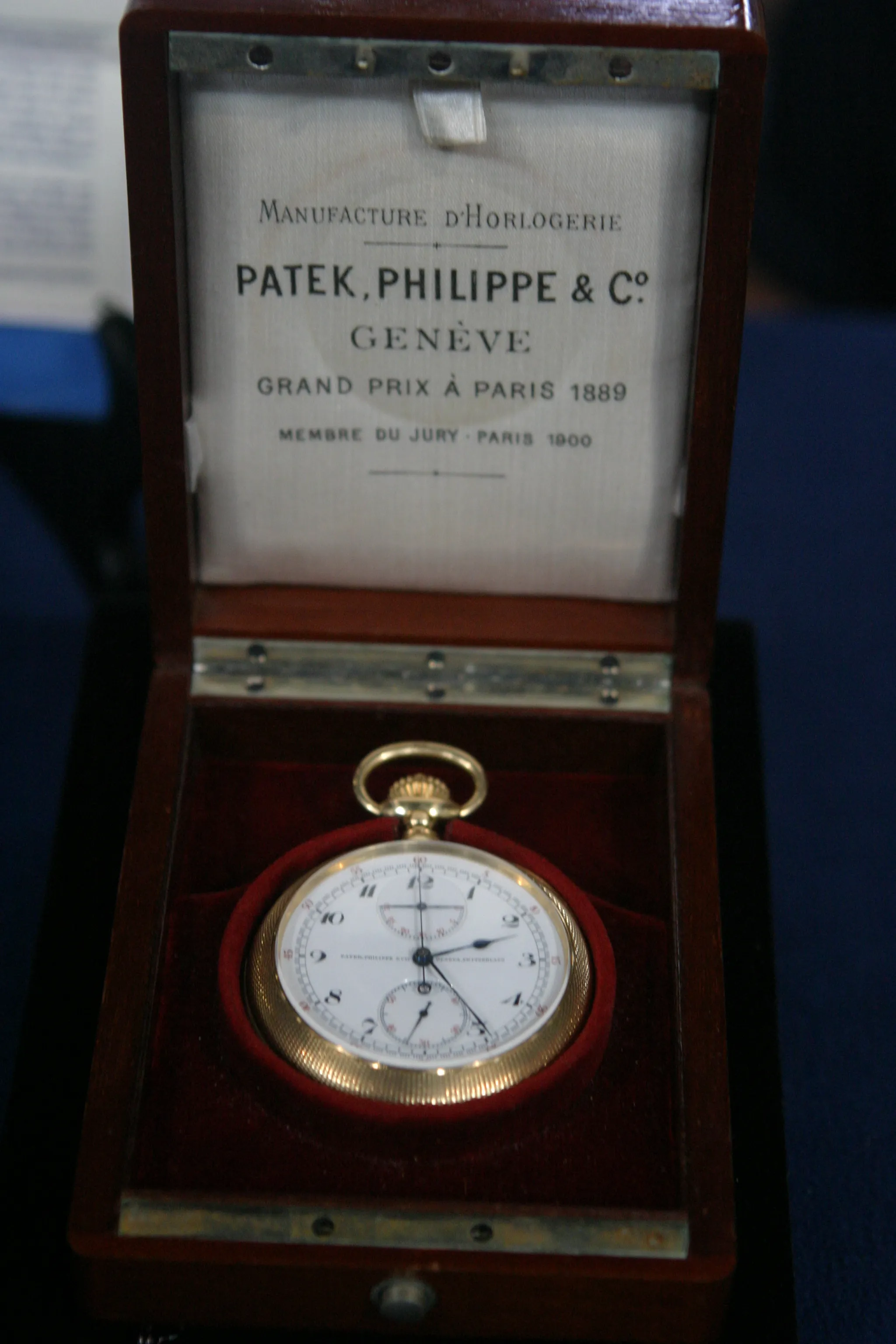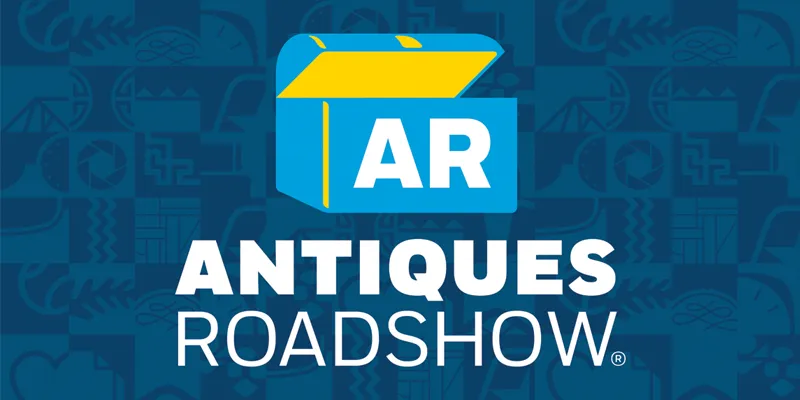GUEST: I brought in my grandfather's violin. My mom and dad always called him Pops. He died in 1945, so I never got to meet him. But he made violins, and he repaired violins for the Philharmonic, the Boston Pops, the New York Symphony. He worked for a company for a while, and then he opened up his own shop, and when he passed away, my mother took one of his violins, and I played this violin since I was in second grade until I had an injury and could play no more, and I am dying to find out what to insure it for. I've heard the story of my pop for all of my life, what an amazing man he was and everything he'd done, and how he became a violin maker.
APPRAISER: Well, I'm very excited about this violin that you brought in today.
GUEST: I can't wait. (chuckles)
APPRAISER: You brought in his tools. And you brought in a picture of his shop in Manhattan.
GUEST: Yes.
APPRAISER: His name, of course, was Nicholas Heinz.
GUEST: Yeah.
APPRAISER: He started training as a violin maker when he was 14 years old.
GUEST: Wow.
APPRAISER: So he studied with Frederick Koenig, who was a violin maker in New York City. And so your grandfather, from the age of 14 to 19 years old, trained with one of the top makers in the United States. He also worked in Chicago for Lyon and Healy, he worked in Philadelphia, and then he opened his own shop in 1926. So this particular violin that you brought in today has a label on the inside, and it says "Nicholas Heinz, Violin Maker and Repairer," and above that label is a brand that's been branded into the wood that says "N. Heinz." I love this picture. He seems so proud and just brimming full of energy. These are his knives for carving.
GUEST: Correct.
APPRAISER: And this little tiny plane is a violin maker's plane. It's used to do the fine arching that would be around the edges of the instrument. This violin is made in very traditional materials. The belly of the instrument is spruce and the back and the ribs are a flamed maple.
GUEST: Ah-hah.
APPRAISER: And the pegs are carved in a beautiful design, as is the tailpiece. I believe that the pegs and the tailpiece were actually made in Germany, and that he would have purchased them for this instrument.
GUEST: Oh! I thought he made them.
APPRAISER: The bow is a French bow.
GUEST: Huh.
APPRAISER: It is stamped right here, it's stamped "Paris." The tip plate broke off, but it doesn't affect the value, and the tip plate is perhaps ivory. It's either ivory or it's mammoth, but you can't tell by just looking at it, and that can be replaced-- it's not a big deal.
GUEST: Oh.
APPRAISER: So the bow is intact. In the world of retail, I would value this bow at $4,000.
GUEST: Holy Hannah! Wowzer! Shut the front door, girl, are you serious?
APPRAISER: Yeah, it's a beautiful bow.
GUEST: Wow, wonderful!
APPRAISER: The violin, I would value...
GUEST: My baby.
APPRAISER: ...at $12,000.
GUESTS (gasps)
APPRAISER: It's a master-quality instrument.
GUEST: Aw, sweetie, I love that.
APPRAISER: And all of the ephemera that you brought, the tools and the, the pictures and the letters, I would say, in, combined with the value, would add $3,000 to its value.
GUEST: Oh, my goodness.
APPRAISER: So all the ephemera and the violin should always stay together.

















